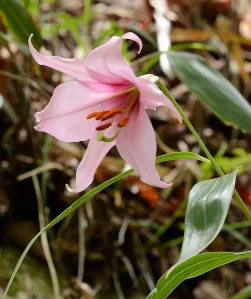Dec . 28, 2024 16:47 Back to list
Exploring the Benefits and Uses of Chinese Plum Pollen for Health and Wellness
The Significance of China Plum Pollen A Cultural and Ecological Perspective
China is renowned for its rich cultural heritage and diverse natural landscapes, among which the plum tree (Prunus mume) holds a special place. Blossoming in late winter or early spring, the delicate flowers of the plum tree not only symbolize resilience but also play an integral role in local ecology and traditional medicine. One of the lesser-known aspects of this botanical beauty is its pollen, which is often overlooked but has impactful implications—both culturally and environmentally.
Cultural Importance
In Chinese culture, the plum blossom is an emblem of perseverance and hope. It flowers in the harsh winter months, demonstrating the ability to thrive against adversity. This characteristic has earned it the title of the flower of the brave. Plum blossoms are celebrated in poetry, paintings, and various art forms, often representing purity and the arrival of spring. Festivals and celebrations often feature plum blossoms, highlighting their importance in Chinese aesthetics and cultural identity.
Within this context, plum pollen is not just a byproduct of flowering; it represents the potential for life and the continuation of growth. Traditionally, people have viewed the plum blossom's seasonal phase as a metaphor for life’s cycles, reflecting themes of renewal and rebirth. This duality—the fragility of blossoms and the strength they signify—makes plum pollen an intriguing subject in the narratives of Chinese folklore and poetry.
Ecological Role
Beyond its cultural significance, plum pollen plays a crucial role in the ecosystem. As one of the first trees to bloom, it provides a vital resource for early pollinators emerging from winter dormancy. Bees and other insects are drawn to the plum tree's fragrant flowers, facilitating pollination not only for plums but for many surrounding plants as well. This interdependence is essential for maintaining biodiversity in local ecosystems.
The pollen grains of Prunus mume are also of interest to scientists studying plant reproduction and environmental adaptations. Understanding how these pollen grains interact with various ecological factors helps researchers predict how changing climates might affect these species. As temperature and seasonal patterns fluctuate, observing these changes in plum pollen could provide insights into larger environmental shifts.
china plum pollen

Medicinal Uses
In traditional Chinese medicine (TCM), plum pollen is valued for its potential health benefits. Rich in nutrients and antioxidants, it is believed to possess various medicinal properties. It has been used in tonic formulas aimed at enhancing overall vitality, boosting the immune system, and promoting skin health. Additionally, plum pollen is thought to have anti-inflammatory effects, aiding in the treatment of respiratory issues commonly associated with seasonal allergies.
Increasingly, the wellness community is integrating plum pollen into modern dietary practices. With a growing interest in natural remedies, many health enthusiasts are discovering this tiny grain’s potential. As people explore its nutritional profile, offerings of plum pollen in health foods and supplements are becoming more common, reflecting a blend of ancient wisdom and contemporary wellness trends.
Future Perspectives
As urbanization and climate change pose challenges to traditional landscapes in China, the fate of the plum tree and its pollen may be in jeopardy. Conservation efforts are crucial to preserving not only the trees but also the cultural narratives tied to them. Public awareness about the importance of these trees, both ecologically and culturally, can help foster sustainable practices that honor this heritage.
Engaging younger generations in the appreciation of plum trees and their blossoms through educational programs might instill a sense of environmental stewardship. Initiatives that protect and propagate these trees can reinforce the connection between cultural identity and ecological responsibility.
In conclusion, China plum pollen is more than merely a lifecycle product of the plum tree. It embodies a wealth of cultural symbolism, plays a critical ecological role, and offers potential health benefits. As we strive for a deeper understanding of our environment and heritage, the plum pollen serves as a reminder of the intricate connections that exist in nature and the importance of preserving them for future generations.
-
High-Viability Male Kiwipollen for Sale | Boost Yield
NewsAug.06,2025
-
Eco Fruit Paper Bags for Peak Freshness | Durability Focused
NewsJul.31,2025
-
Pollen Peach Tree for Pure Pollination and High-Quality Peach Pollen
NewsJul.30,2025
-
Premium Cherry Pollen for Pure Pollination & Different Types
NewsJul.30,2025
-
Artificial Pollination Solutions for Various Plant Pollen Types
NewsJul.29,2025
-
Artificial Pollination Solutions for All Plant Pollen Types
NewsJul.29,2025